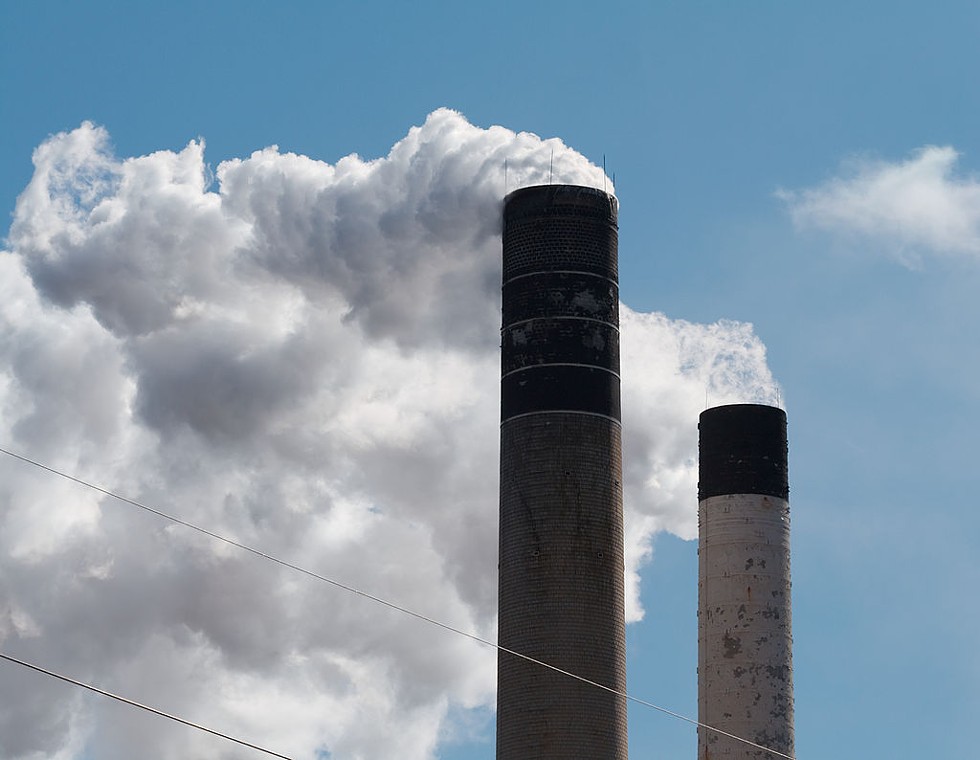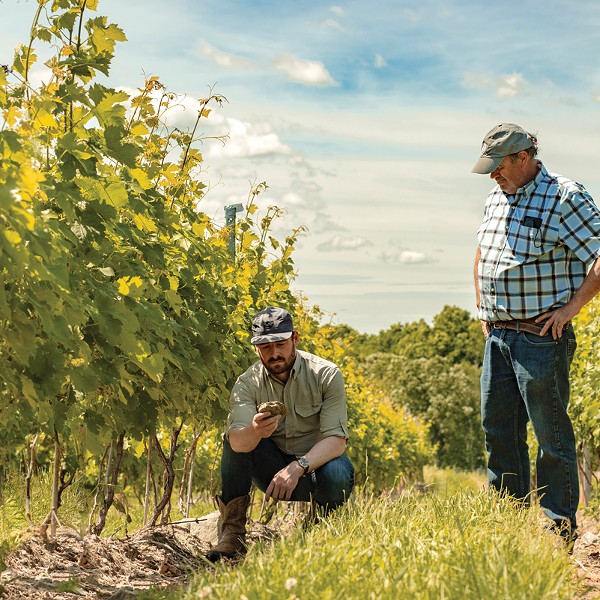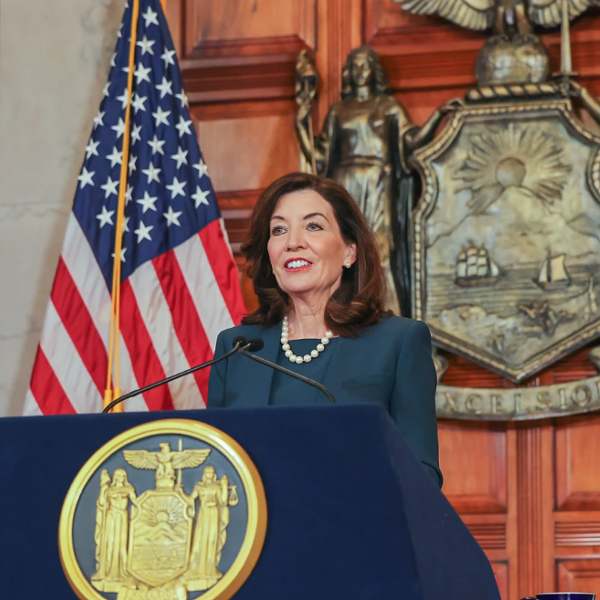"Environmental despair is a poison every bit as destructive as the methylated mercury in the bottom of Onondaga Lake. [...] Restoration is a powerful antidote to despair."—Robin Wall Kimmerer, Braiding Sweetgrass
In August, an estimated 4.6 million acres of the Amazon rainforest burned in a government-condoned campaign to clear land for crops and cattle. Brazil is the world’s largest beef exporter, and the industry contributed over $6.2 billion (0.3 percent) to the country’s GDP in 2017. One might think Brazil could be incentivized to protect the rainforest, home to more than 10 percent of the world’s known species, but President Jair Bolsonaro famously turned down a $20 million Amazon aid package from the G7, citing the gesture as a “colonialist and imperialist” attempt to undermine Brazil’s economic autonomy. And he has a point: $20 million is pocket change, less than 1 percent of Brazil’s beef exports and a far cry from what it would take to make preserving the rainforest economically viable. What most of the world saw as a hopeless and horrifying political problem, though, Bjorn Otto saw as a math problem. And math problems can be solved.
As senior VP of Corporate Sustainability at Equinor, a Norwegian multinational energy company, Otto spends a great deal of time thinking about greenhouse gas emissions. Between Norway’s domestic regulations and those imposed on them by the European Union, more than 80 percent of the country’s carbon emissions are subject to taxation. Heavy greenhouse gas emitters like Equinor spend about 30 percent of their production dollars on carbon planning in order to minimize their emission footprint and associated costs. Tropical rainforest protection will become part of that effort as soon as there’s a reputable market open to private companies, according to Equinor’s 2018 Sustainability Report. If carbon trades at the right price, a hectare of Amazon rainforest could be worth more to Brazil than a hectare of pastureland.
By ratifying the 2015 Paris Climate Agreement, 95 percent of the world’s nations (including Brazil) have made achieving this unlikely sounding outcome their very real mission. The question is what will it take to get there? And what will getting there look like for the Hudson Valley?
Carbon Forum North America Comes to NYC
Some of the most significant conversations around carbon trading have been happening in our own backyard. This past September, Otto was among the business leaders, researchers, and policymakers to gather in New York City for Carbon Forum North America, an annual conference organized by the International Emissions Trading Association (IETA), a nonprofit organization that facilitates international carbon trading. The two-day event, held in the historic wood-paneled halls of the Explorers Club, featured roundtable discussions and presentations on carbon pricing initiatives around the world. An impressive lineup of prestigious guest speakers—among them the CEO of Royal Dutch Shell and renowned explorer-environmentalist Bertrand Piccard—presented to a close-knit audience of carbon trading insiders, many of whom seemed to know each other from other such conferences.
Everyone in the room considered trade critical to—if not the only means of—addressing climate change. Carbon markets incentivize greenhouse gas emitters, like Equinor, to reduce their emissions and invest in carbon sequestration projects, or “sinks,” like the Amazon rainforest. They do this by penalizing companies for over-polluting. If Equinor doesn’t pay to have its carbon emissions extracted from the atmosphere, it will instead have to pay taxes on those emissions. With these restrictions in place, carbon trading becomes the most cost-effective option, creating a flow of funds from polluting industries to restorative ones.
At a time when almost all environmental rhetoric swings between extremes of alarm and despair, the future that carbon economists envision is a hopeful one. Markets have the potential to curb global greenhouse gas emissions and slow the rise in average global temperature, which has been increasing at an unprecedented rate since the 1950s. Climate experts agree that limiting average global temperatures to between 1.5°C and 2°C above pre-industrial levels will help avert warming’s most catastrophic effects. Leveraging markets to this end, however, means having to track and account for the entire world’s greenhouse gas emissions—a staggeringly complex endeavor.
The economists, delegates, and policymakers involved are nevertheless committed to ironing out the minutiae that will make the math possible. A great deal of the conference was spent discussing the trade rules outlined in Article 6 of the Paris Agreement, which were scheduled to be finalized and adopted at the United Nations Climate Change Conference (COP25) in Madrid this past December. Delegates were unable to reach a final consensus regarding this crucial “rulebook” and will continue negotiations in 2020, though countries may already begin transferring carbon credits between them under Article 6.2. The United States’s withdrawal will mean more ambitious reduction targets for the other participating countries, as meeting the 2°C goal is an ecological necessity.
Despite the federal government’s pivot away from climate initiatives, carbon markets have been springing up across the country since the Kyoto Protocol, an earlier international agreement on climate change that went into effect in 2005. New York is among a handful of states that have implemented their own cap-and-trade programs. The resounding success of these programs, some of which have been benefitting the Hudson Valley for years, suggests that carbon markets have tremendous economic and environmental potential.
New York State's Carbon Market
The largest government-mandated, or “compliance,” market in the country today is California’s cap-and-trade program, launched in 2013. It covers the widest range of economic sectors and has the state “on track to roll back carbon emissions to 1990 levels by 2020.” The oldest mandatory carbon market, however, is the Regional Greenhouse Gas Initiative (RGGI, also known as “Reggie”), established in 2008. A cooperative effort by eight states including New York, RGGI sets a limit on how much CO2 power companies in the region may emit, gradually shrinking that budget each year. Any company that expects to exceed the limit may pay for the privilege by purchasing allowances at auction; each allowance authorizes its bearer to emit one ton of CO2 beyond the cap. The money RGGI collects through allowance auctions then goes directly into funding renewable energy and sequestration projects. The New York State Energy Research and Development Authority (NYSERDA) alone received over $1 billion in funding through RGGI auctions in 2018.
One might think that with so much money going to carbon allowances, energy prices in RGGI states would have increased, but a research study by the Acadia Center shows the opposite is true: Electricity prices in RGGI states have fallen by 5.7 percent, as increased energy efficiency has resulted in decreased demand. In the rest of the US, electricity prices haven’t fallen at all; rather, they’ve increased by 8.6 percent in the last decade. CO2 emissions from RGGI electric power plants have also fallen by 47 percent since 2008, dramatically outpacing the rest of the country. A 2015 study by Duke University found that, while the 2008 recession and increased availability of natural gas during this period played a part in the region’s emissions decline, “the RGGI program appears to be the dominant factor,” particularly due to the complementary measures it has helped inspire. Each RGGI state, for example, has implemented renewable portfolio standards, which stipulate how much state power must come from renewable, non-emitting sources. RGGI auction proceeds have also helped fund complimentary energy efficiency projects through programs like NYSERDA. Additionally, the GDP of RGGI states has also grown 30 percent more, on average, than non-RGGI states, perhaps owing in part to the program’s success: An independent economic study of the program found that “its first decade, RGGI’s carbon cap-and-trade program has generated net-positive economic value for the participating states’ economies on the order of $4 billion dollars” and “tens of thousands of job-years” (one job-year being full-time employment for one person for one year).
New York State is also a member of the Transportation and Climate Initiative (TCI) and is on the verge of committing to its cap-and-invest program aimed at reducing emissions from vehicles and fuels.
Between California’s cap-and-trade program and RGGI, there’s a lot to recommend compliance or mandatory carbon markets, but voluntary markets have begun to take root as well. Unconnected with state or federal regulations, voluntary markets exist for buyers of all kinds. Many airlines around the world, for example, are offering passengers the opportunity to offset their flight emissions when they travel, which directly fund projects like regenerative agriculture.
Though their economic models differ, both voluntary and compliance markets will depend increasingly on a plentiful supply of carbon offsets as they grow. This is where agrarian regions like the Hudson Valley may have an opportunity to capitalize on growing demand for carbon sinks.
Regenerative Agriculture as a Natural Climate Solution
While there are other ways to produce a carbon credit (emissions reduction, artificial carbon capture), natural climate solutions like conservation, restoration, and land management are the most immediately attainable and cost-effective. Deputy director Mary Grady of the American Carbon Registry spoke in passionate support of them at CFNA, saying that “these ‘net negative’ technologies are the best near-term opportunity we have to reduce and stabilize emissions and limit global warming to 1.5 degrees.”
This means that any land management practice that pulls carbon out of the atmosphere and stores it safely underground could theoretically generate carbon credits and additional revenue. This includes farming, particularly regenerative agriculture.
In countries that have implemented carbon pricing laws, the demand for nature-based carbon offsets is high. Canada just introduced its Greenhouse Gas Pollution Pricing Act in June 2018, and Kimberly Cornish says she was swamped with proposals at CFNA. “People kept handing me their cards, saying they need offsets for Alberta and to get in touch when I have them.”
But Cornish is not in the business of selling offsets—at least not yet. As director of the not-for-profit organization Food Water Wellness Foundation, her goal is to come up with a more accurate means of measuring soil carbon so that farmers and landowners can make more money selling offsets.
Right now, most soil carbon credits are awarded using a practice-based system, meaning that farmers have to follow a particular set of growing methods in order to get credit for sequestration. The problem is, cookie-cutter practices are bad for regenerative, carbon-capturing agriculture. “To really get regenerative agriculture working,” Cornish explains, “you have to be really responsive and constantly changing up your practices to be meeting the goals. You can’t do it in a standardized way.”
That’s why Cornish and her team are working to develop a measurement-based protocol that will give growers the freedom to adapt to changing landscapes and weather conditions. Using recent advances in pedometrics, predictive soil mapping, and machine learning, they think they can find a way to give farmers credit for the carbon they’re actually sequestering—not just what they should be sequestering based on their growing methods. They’re still a ways off from a full-fledged protocol, though, so for now, Cornish advises farmers to “get whatever protocol you can on whatever market you can, because that’s going to get money in your jeans as quickly as possible.”
Bringing Hudson Valley Carbon to Market
Though the science of soil carbon monitoring continues to evolve, there are already opportunities for agrarian communities like the Hudson Valley to become involved in selling carbon offsets. Although they are unlikely to be a major revenue source for small-to-midsize farms today, carbon markets are likely to become more lucrative as they mature. Propagate Ventures, an agroforestry investment firm based in Hudson, is already planning for that eventuality by “structuring ownership-retention of the tree-based carbon sequestration,” according to CIO Harrison Greene. “As we develop more and more farmland with agroforestry and aggregate those projects, that will open the door to larger buyers of carbon.”
For smaller operations, joining forces with other farms is key to selling carbon. Table stakes for a carbon market transaction are 10,000 metric tonnes of CO2 equivalent, a unit of measurement that compares emissions from greenhouse gases on the basis of their global-warming potential. “If you’re doing really good rangeland or perennial systems management and you have sufficient water, you could reasonably accrue one ton of soil carbon per year per hectare,” Cornish says, the same as sequestering 3.667 tons of CO2 equivalent (soil carbon is more concentrated than atmospheric carbon). At that rate, you would need a staggering 2,700 hectares to complete one CO2 transaction.
“But some of the regenerative farmers are actually seeing three tons of soil carbon accrual per year,” says Cornish. That brings the required land area down to just over 900 hectares, underscoring how critical cropping practices are to carbon sequestration rates. Companies like Propagate Ventures and the Hudson Valley farms mentioned in Keeping Carbon, a new documentary on local regenerative farming efforts, benefit from these practices even without the help of carbon trading. “For us, carbon is really the icing on the cake, in that the systems we manage yield sufficient financial returns before taking carbon payments into account,” says Greene. Cornish agrees that regenerative agricultural practices “will increase farms’ water-holding capacity, filtration, and economic resilience in the face of crop failure,” all of which are especially critical in the face of climate change.
If a family farm wants both improved soil resilience and carbon payments, it will have to pool its carbon in order to meet the transaction minimum. At around 205 acres or 83 hectares, the average New York State farm is unlikely to sequester the requisite 10,000 metric tonnes of CO2 equivalent needed for a transaction, but there are more than 128,000 hectares of farmland in the Hudson Valley alone. If growers form associations with one another and aggregate their sequestered carbon, it’s entirely possible to turn that carbon into cash.
This is precisely the approach that more than 88,000 farmers in four East African countries and India have taken with the International Small Group and Tree Planting Program (TIST). Since its establishment 20 years ago, this association of reforestation efforts has resulted in the planting of some 19 million trees and sequestered 4.9 million metric tons of CO2. Its farmers receive carbon payments as well as an estimated $7 in ancillary benefits (fruit, shade, fuel) per tree. The program could serve as a blueprint for other group programs.
TIST and other carbon projects turn their sequestered carbon into carbon credits by having their operations assessed according to an accepted standard. TIST uses Verra’s Verified Carbon Standard (VCS), which was just named Best Voluntary Standard of 2019 by Environmental Finance, an online news and analysis service. A protocol like Verra outlines how carbon will be measured and accounted for. Then, an aggregator (also known as a project developer) like The Climate Trust or ClimeCo helps land managers and farmers actually implement the protocol. A third-party verifier like Brightspot Climate then visits the project sites, confirms that the protocol has been properly followed, and authorizes the release of carbon credits. The project developer then oversees their sale on the carbon market (see diagram).
Verra isn’t the only path to a carbon credit, however, and some carbon platforms endeavor to streamline this process for individual farmers rather than groups. Nori, a market focused solely on carbon removal and sequestration, trades in Nori Removal Tons (NRTs) and launched just this year. CEO Paul Gambill says the market was designed to make participation by small-to-midsize farms (less than 1,000 acres) “easy as can be.” Their first farm project is selling at $15 per metric ton of CO2, but Gambill says farmers should factor in the associated costs of carbon quantification and verification before participating. These costs are expected to decrease as the market becomes more established, and Nori generally endeavors to keep project startup costs low.
Indigo is another platform that appeals directly to farmers with a practice-based methodology promoting regenerative agriculture. Indigo claims its cropping system will increase participating farms’ soil carbon by 2-3 tons CO2 equivalent per acre per year, yielding between $30 and $45 per acre per year. Its grower questionnaire suggests, however, a specialization in large-scale monoculture operations, as the only crops mentioned are barley, corn, cotton, oats, rice, soybeans, and wheat.
Because New York is a RGGI state, Hudson Valley farms technically aren’t limited to the above voluntary markets, but they might as well be. Only farms involved in afforestation and/or agriculture waste methane digestion currently qualify to sell offset allowances to RGGI power plants, and allowances are auctioning for just $5.20. Until RGGI greatly reduces its emissions cap and introduces more accessible offset categories, Hudson Valley farms will find greater returns through voluntary markets.
As the diversity of these market options suggests, it’s still early days for carbon trading. Those who participate today are, as several of CFNA’s explorer keynote speakers asserted, pioneers in the field. Despite political setbacks and the overall ambitiousness of the project, international carbon trade remains integral to the Intergovernmental Panel on Climate Change’s ongoing negotiations, suggesting it’s less a question of if carbon markets will become the norm, but when.
What sets carbon trading apart from other climate solutions is that it doesn’t ask us to opt out of the culture that brought us to this era of profligate consumerism. Rather, it invites us further in, encouraging enterprise while changing its consequences. In Braiding Sweetgrass, an autobiographical treatise on the nexus between indigenous wisdom and science, Robin Wall Kimmerer likens modern consumerism to the Windigo, an insatiable spirit of Ojibwe myth that devours everything in its path. Like the Windigo, our “consumption-driven mindset masquerades as ‘quality of life’ but eats us from within.” Kimmerer imagines herself giving the figurative Windigo “a taste of his own medicine,” an emetic brew concocted from all the healing plants she explores in the rest of the book. The more the Windigo consumes of this medicine, the less he hungers.
In a carbon economy, the more we consume, the more we reinvest in the Earth. Could this be the system that finally halts the positive feedback loop of unbridled consumption? There’s at least one wood-paneled roomful of economists who think so.
Nicole Hitner is a writer and marketer based in the Hudson Valley. Follow her on Twitter @nicolehitner.


















